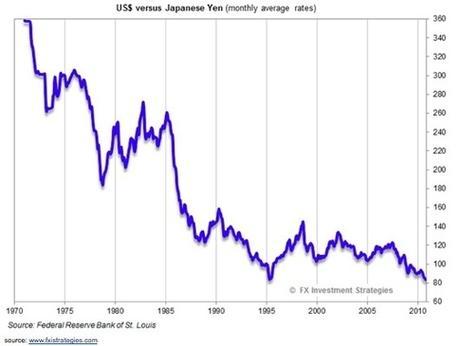It’s not unusual if you haven’t received a forward message, which goes like this…
DOLLAR Vs INDIAN RUPEES
Real story of American Dollar v/s Indian Rupee…
blah…blah…blah…
YOU CAN MAKE A HUGE DIFFERENCE TO THE INDIAN ECONOMY BY FOLLOWING FEW SIMPLE STEPS…
blah…blah…blah…
We would be sending useless forwards to our friends daily. Instead, please forward this to all your friends to create awareness…
I knew that this isn’t quite a possibility and there are so many other factors influencing the economy of the country, though I wasn’t able to comprehend a proper understanding. It was then I read this simple and amazing explanation from Quora. And this is definitely worth sharing. So sharing the post from the author as it was posted, from Quora.
~~~~~~
Answer by Balaji Viswanathan:
Let us assume that such an event happens overnight without a drastic change in productivity or a massive drop in real wages.
A good Indian engineer makes Rs.75,000 per month. Skills wise, this guy might be comparable to a guy making $3000 in the US.
What if 1 USD becomes 1 INR and this guy’s productivity and salary stays the same? The Indian guy’s salary becomes equal to $75,000. Before he is happy with his paycheck and go on to buy hot gadgets from the Apple store, a few things change.
Why would a company pay him $75,000 when you can get someone for $3000 in the US? Of course they would not. So, every Indian – engineers, teachers, accountants, designers – would be fired from their jobs and jobs would move out of the country as workers are cheaper outside India. Where you cannot move the job outside India (such as cleaning), companies would find tech. An awesome robotic vacuum cleaner worth $1000 would be used rather than the $4000 pm human cleaner. As people get removed from the jobs, plenty of other jobs that rely on them (restaurants, cafes, retail shops, tourism, airlines…) go kaput.
As people get fired, they will be ready to work for lower and lower salaries, until their salary drops below the international level of say $2500. Since 1 USD = 1 INR, that would make great engineers make Rs.2500 pm. How would they pay their EMI (mortgage) on homes, cars and gadgets? They cannot and they would default.
The banks would have huge unpaid loans and they will go bankrupt. Investors would exit and government would have print a lot of money to keep the banks alive. That would spike up the inflation and push down the rupee so much that things get back Rs. 60 = 1 USD. At that point, the Indian’s wage will be so low that jobs will move back again and the cycle would continue.
There are plenty of real life examples of this. In 1986, Japanese yen doubled in strength. $1 was about 280 yens until then and that suddenly become like $1=140 yens. Just that completely screwed Japanese economy, from which they never recovered. Why did Japan increase their currency strength if they knew things are going to get worse? It is because the Americans forced them to do so.

This is the reason why RBI is very careful not to let rupee too strong. It is to India’s advantage that $1 equal Rs.60. It helps keep exports high, wages high and imports low.
Ultimately the strength of a currency depends on only two things:
- Productivity of the people. If every guy making Rs.75000 pm is able to produce 25 times more output than a foreigner making $3000, then India can enjoy $1 = Rs.1.
- Inflation. If a country goes through a sustained low inflation in relation to other countries, its currency would move up. That means after 100 years, if your salaries stays the same at Rs.75000 pm while America’s inflation takes an average guy there’s salary to $75000, then $1 = Rs. 1
As simple as that. Since, the second scenario is bad, we need to focus only on the first scenario. How do we get an average Indian produce many times more than a foreigner?
EDIT: Based on the comments, I see that people are quite confused by what the currency rates mean. People assume somehow that $1 = 60 Rs means US is stronger than India. By that logic, 1 Bangladeshi Taka that equals 1.5 Yen, means the Bangladeshi economy is stronger than Japan’s?
Currencies had arbitrary starting points. In 1898, the British government fixed 1 rupee equaled 1 shilling and 4 pence (1 pound = 15 rupees). You could have set anything. You could have said 1 rupee equals 10,000 pounds as the starting point and designed the economy that way. It would not have mattered at all. The starting points are merely for convenience.
What matters is, whether the currency is moving up or down over long time. The rupee has gone down against the pound over the last 115 years and that is an indication that India’s productivity has not kept up and/or the inflation was high relative to UK.
Also read:
- Eclectic Economics.
- Why has Indian rupee devalued from around ₹5 per $1 at independence to around ₹60 per $1 today?
What would happen if 1 USD = INR 1?
~~~~~~
Please do check out the other answers too. They are really thought provoking and informative.
P.S..Quora > WordPress > Twitter >>…> Facebook usage, now-a-days! :)
Cheers
God Bless
About these ads
